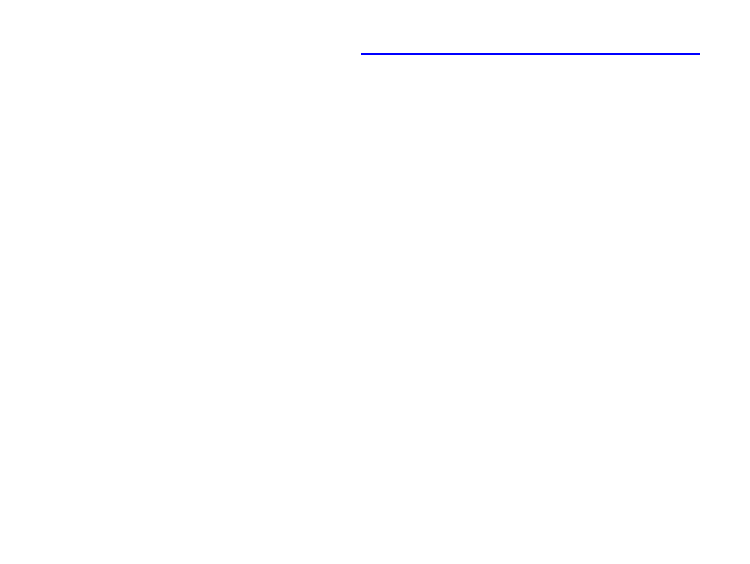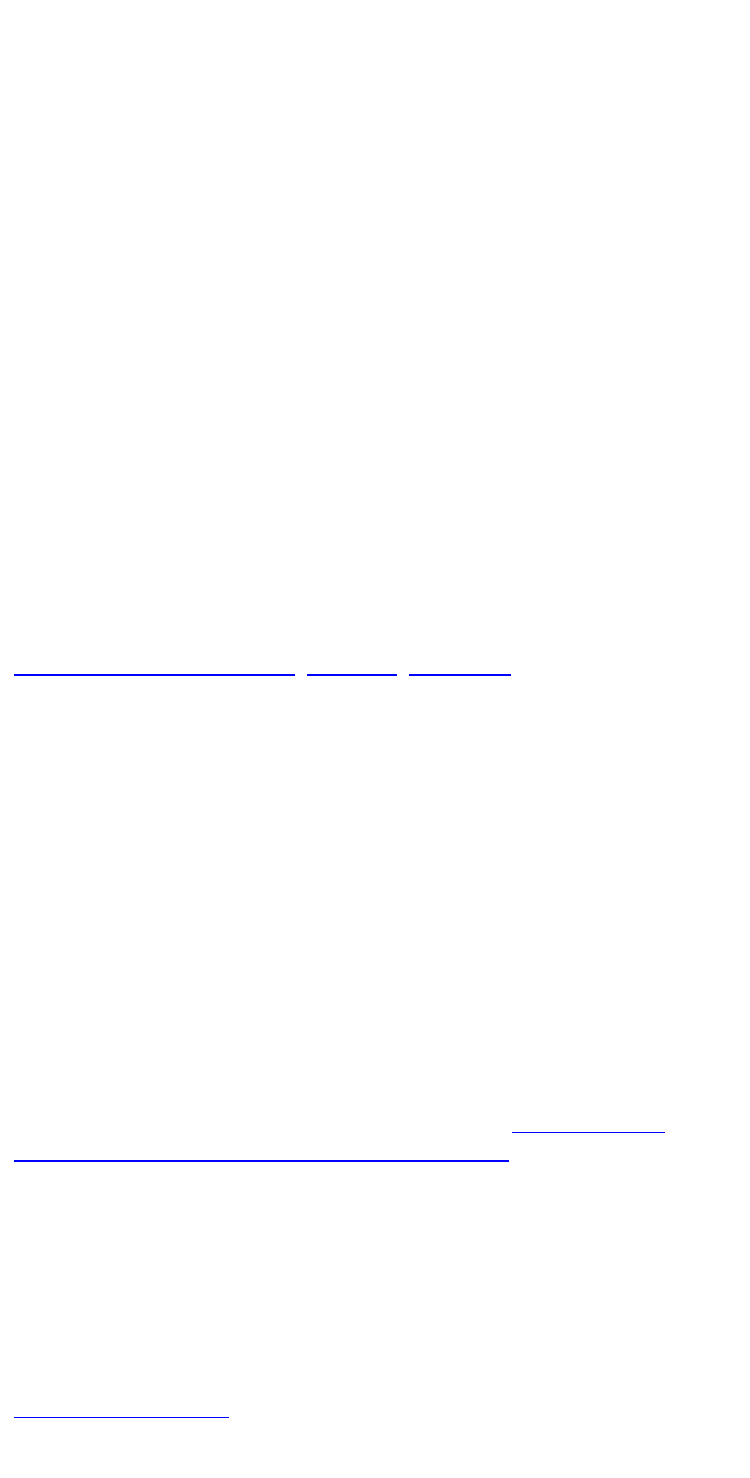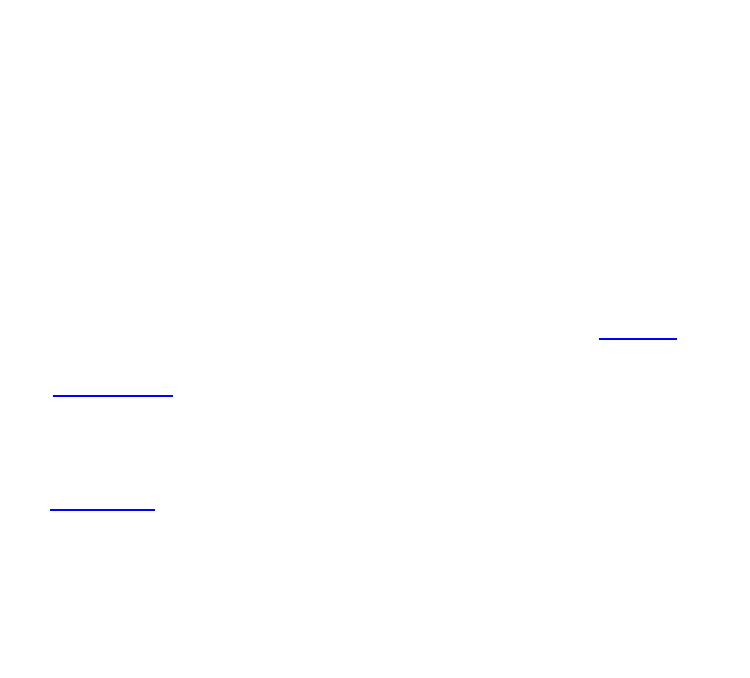Mona Baker & Gabriela Saldanha. Routledge Encyclopedia of Translation Studies (2nd edition)
Подождите немного. Документ загружается.


Page239
inwhichthecriticisurgedtoestablishcriteriaforevaluationthataddressthe
‘presuppositionsandexpectationsabouttexts’sharedbyreadersandwritersin
eachlanguage(1978:122).VandenBroeck(1985:56)positsasthestarting
pointofhisdescription‘acomparativeanalysisofthesourceandtargettexts’
thatincludesboth‘textstructures’and‘systemsoftexts’.Wilss(1982:220)
arguesforaprincipallyempirical,linguisticapproachthatrestsonacomparison
ofsourceandtargetlanguagetexts,andSimpson(1975:255)similarly
recommendsalinguisticapproachthatisprimarilycomparative;Kirkov
(1988:231)suggestsmorecomprehensive‘aestheticlinguisticcriteria’butstill
considersbothtranslationandoriginal.Thesevenfeaturesoftextuality
proposedbyNeubertandShreve(1992)alsoprovideaframeworkthatcould
beusedforcomparativeanalysisandevaluation,asdoSnellHornby’sanalyses
(1988).
Comparativemodels,however,donotrepresenttheonlyapproachto
translationcriticism,despiteaninsistenceonthepartofsomescholarsthat
translationcriticismmustnotbeperformedwithouttakingtheoriginalinto
account(Vilikovský1988:75;deBeaugrande1978:121).Norarethecritics
whostudyonlythetranslatedtextanditscontextnecessarilythereviewersand
editorswhooverlookthefactoftranslationentirely.Onthecontrary,Lefevere
(1981:55,59)hasexplainedthePOLYSYSTEMhypothesisanditsfocuson
theproductoftranslationinthecontextofthetargetcultureratherthanonthe
translationprocess.Toury’sworkwithtranslationalNORMSalsosuggests
evaluativecriteriacentredonthetargetsystemalone(1978,1980b).Although
Touryarguesthatcomparativestudymighthavesomeroleintranslation
criticism,henotesthatcomparisonsbetweentranslationsandoriginalsoften
leadtoanenumerationoferrorsandareverencefortheoriginal(1978:26).His
commentsareechoed,albeitindifferentframeworks,byJorgeLuisBorgesand
TomConley.Borgespointstothecripplingeffectthatbilingualeditionscan
haveonareader’sabilitytoread,andimplicitly,toevaluateatranslation
(Alifano1984:51),andConley(1986:48)statesthat‘criticsfabricate
“something[tobe]lostintranslation”attheveryinstanttheyplacetheireyes
betweentwoversionsofacanonicaltext’.Bermanelaboratedandarguedfora
‘productivecritique’inwhichthe‘confrontation’ofatranslationandtheoriginal
isadecisive,butnotthesolecomponentofanethicalandaestheticevaluation
thatconsidersatranslationinrelationtoitsownlanguageandliterarytradition
(1995:83–96)andtotheexperienceoftheforeignitmakespossibleinthem
(1999:74–5).
Recentworkinliterarycriticismandtheory,linguistics,anthropology,
philosophyandculturalstudieshasdirect,albeitattimescontradictory
implicationsfortheevaluationofliterarytranslations.Ontheonehand,notonly
the‘deconstructionists’entireproject’(Gentzler1993/2001:146;see
DECONSTRUCTION)butalsotheentirerangeofchallengespresentedby
poststructuralismtoprevailingdefinitionsoftextualauthorityandintegrityhave
renderedobsoleteconventionalevaluativeterms,puttinginquestioneventhe
notionof‘between’inthecontextoftranslation(Tymoczko2003).Onthe
otherhand,theworkofpostcolonialscholarshasdocumentedtheextentto
whichtranslationscango‘wrong’,even‘respectfully’(Spivak1992b:183)
wheninequalitiesandpowerrelationshipsbetweenculturesarenotunderstood
andacknowledgedappropriately(seePOSTCOLONIALAPPROACHES).
Inbothinstancesthepracticeoftranslationbecomesnewlyvisibleandtherole
ofthetranslatorisscrutinized;inbothinstancesvaluejudgementsaremade
accordingtonewandshiftingcriteria.
Despitetheunquestionablefreedomthattheradicaldecentringassociatedwith
postructuralismofferstranslators,theveryrequirementofdecentringitself
carriesasetofexpectationsandimplicitevaluativecriteria.Forifpost
structuralismgrantedanewagencytotranslators(Venuti1992:11),italso
imposedonthemanincreasedburdenofresponsibility.Intheabsenceof
universaldefinitions,translatorshavebeencalledontomakeexplicitthe
strategiesandgoalsthatgoverntheirpractice(see,forexample,Arrojo1998).
Theyarealsoencouragedtowriteprefaces,afterwords,andotherformsof
commentary.Especiallyinthecaseofinnovative,transgressivetexts,theyare
expectedtotranslatetransgressively,andtheirworkhasbeenmeasuredagainst
criteriasuchas‘abusive’(Lewis1985:56)or‘destructive’(Conley1986:49)
fidelity.Inthismeasurement,wordslikeaccurateandincorrectarenot
relevant.Instead,failureisassociatedwithan

Page240
inabilitytocontinuethelinguisticmomentumofatext,withan‘excessof
reverence’thatcanmakeitimpossibleforatranslatorto‘takethenecessary
distancefromtheoriginal’–whichmustfunctionnotasanabsolutebutasa
pointofdeparture(Sartiliot1988:28).Consequently,translationsareoften
measuredaswellinthelightofthetranslators’ownwordsabouttheirworkor
intermsofthecontextinwhichtheworkappears.Suchcriticism,inadditionto
concerningitselfwithnewtranslations,impliesthereevaluationoftranslations
performedinthepast(Conley1986;Porter1991).Italsoimpliesthe
acceptanceofmultipleversionsandtheevaluationofindividualversionswith
respecttothepurposesforwhicheachversionisintended–‘thedifferent
valuesbehindwhatmakesa“good”translation’(Cohen1988:111).
Thesimultaneousagencyandresponsibilityaccordedthetranslatorby
contemporarytheoriesofliteratureandtranslationalsocharacterizethe
translator’sworkasdefinedbytranslatorsandcriticswhopositionthemselves
withrespecttoaspecificlocationorideology.Forwhentranslationisdefinedin
termsofa‘siteforraisingquestionsofrepresentation,power,and
historicity’(Niranjana1992:1),theexpectationisthatthosequestionswillbe
raised.Thisisadefinitionthatchallengestranslatorstorethinktheconventional
useofequivalence,differenceandcommunication.Inthefaceofnotmerely
differencebutdecidedinequalitiesbetweenlanguagesandcultures,translators
havebeenaskedtoconstructa‘site’inwhichthereis‘overlapwithout
equivalence’(Bhabha1994a:186)andurgedtomaketheirworknotfluentand
readablebut‘thick’(Appiah1993)withthefactorsthatcanmakesmooth
interactionanillusiononthepartofthemorepowerfulparty.Thiscanoccurin
textsthemselvesorinthevariouscommentariesthataccompanythemas
‘combatweapons’againsttime(Mukherjeee1994:73),butalsoagainst
transparencyonthepartofthetranslation.Consequently,atranslationmaynot
beevaluatedonthebasisofitsreadibilityandthe‘communication’itmakes
possiblebutintermsofanewlydefinedliteralism(Robinson1993:124;Gaddis
Rose1995:84),theextenttowhichitpromptsacrisisincommunication,or
eventheextenttowhichtranslationiswithheld(Spivak1992a:192–5,1992b:
792).Translatorsthemselvesmaybeevaluatedintermsoftheirqualificationsto
represent‘another’identity–nationality,race,religion,GENDER(Voldeng
1984;deLotbinièreHarwood1991:139–91;Spivak1992a:178–92).Ina
similarway,translationscanbejudgedintermsofthe(mis)representationsand
the‘exoticandessentializingstereotypes’theyperpetuate(Payne1993:3).
Thecoexistenceofsuchnumerousanddiverseevaluativecriteriaand
approachesoffersachallengetocontemporarycritics,readersandtranslators.
Whethercriticsworktoevaluatecontemporarytranslationsorthoseperformed
inthepast,theyfindthemselvesobligedtoinformthemselvesaboutthecultural
contextofagiventranslationandalsotobecognizantoftheirownevaluative
criteriaandthecontextwithinwhichtheyapplythem.Likewise,readersand
translatorsmustformulateevaluativecriteriathatwillenablethemtoassess
divergent,evencontradictorycriticalevaluations.Forexample,Venutihas
discussedtheinnovative,subtly‘foreignizing’STRATEGIESinthetranslations
oftheworkbywriterssuchasArgentineJulioCortázarthatduringthe1960s
alteredboththe‘canonofforeignfictioninAngloAmericanculture’and‘British
andAmericanfiction’(Venuti1995:266).Payne,ontheotherhand,findsthat
translationsofthe‘“bigfour”oftheLatinAmericanboom’havereinforced,
ratherthanchallenged,NorthAmericanstereotypesaboutLatinAmerica
(1993:30–31,33).
AnadditionalexampleisprovidedbyrecentevaluationsoftheworkofSir
WilliamJones,whosetranslationsintoEnglishofIndianliteraturewerehighly
influentialinthelateeighteenthcentury(seeINDIANTRADITION).Cannon
praisesJones’sworkwithoutqualification,particularlyhistranslationof
Kalidasa’sSakuntala(1789),statingthathisworkpromptedEuropeansto
haveanewrespectforIndianliterature(1986:181).Figueira,however,finds
thatJones’stranslation,likethoseofothertranslatorsoftheSakuntala,was
often‘erroneous’,generatingmisrepresentationsoftheIndianwork(1991:198–
9).Niranjana(1992)andSengupta(1995)offerstillharsherevaluations.
SenguptaemphasizestheoversimplificationofKalidasa’sworkthatoccurredas
Jonesshapedan‘image’foritthatEuropeanswouldfindacceptable
(1995:161–2);Niranjanadetailshisparticipation,throughhistranslation,inthe
constructionoftheEnglishlanguageHindu

Page240
inabilitytocontinuethelinguisticmomentumofatext,withan‘excessof
reverence’thatcanmakeitimpossibleforatranslatorto‘takethenecessary
distancefromtheoriginal’–whichmustfunctionnotasanabsolutebutasa
pointofdeparture(Sartiliot1988:28).Consequently,translationsareoften
measuredaswellinthelightofthetranslators’ownwordsabouttheirworkor
intermsofthecontextinwhichtheworkappears.Suchcriticism,inadditionto
concerningitselfwithnewtranslations,impliesthereevaluationoftranslations
performedinthepast(Conley1986;Porter1991).Italsoimpliesthe
acceptanceofmultipleversionsandtheevaluationofindividualversionswith
respecttothepurposesforwhicheachversionisintended–‘thedifferent
valuesbehindwhatmakesa“good”translation’(Cohen1988:111).
Thesimultaneousagencyandresponsibilityaccordedthetranslatorby
contemporarytheoriesofliteratureandtranslationalsocharacterizethe
translator’sworkasdefinedbytranslatorsandcriticswhopositionthemselves
withrespecttoaspecificlocationorideology.Forwhentranslationisdefinedin
termsofa‘siteforraisingquestionsofrepresentation,power,and
historicity’(Niranjana1992:1),theexpectationisthatthosequestionswillbe
raised.Thisisadefinitionthatchallengestranslatorstorethinktheconventional
useofequivalence,differenceandcommunication.Inthefaceofnotmerely
differencebutdecidedinequalitiesbetweenlanguagesandcultures,translators
havebeenaskedtoconstructa‘site’inwhichthereis‘overlapwithout
equivalence’(Bhabha1994a:186)andurgedtomaketheirworknotfluentand
readablebut‘thick’(Appiah1993)withthefactorsthatcanmakesmooth
interactionanillusiononthepartofthemorepowerfulparty.Thiscanoccurin
textsthemselvesorinthevariouscommentariesthataccompanythemas
‘combatweapons’againsttime(Mukherjeee1994:73),butalsoagainst
transparencyonthepartofthetranslation.Consequently,atranslationmaynot
beevaluatedonthebasisofitsreadibilityandthe‘communication’itmakes
possiblebutintermsofanewlydefinedliteralism(Robinson1993:124;Gaddis
Rose1995:84),theextenttowhichitpromptsacrisisincommunication,or
eventheextenttowhichtranslationiswithheld(Spivak1992a:192–5,1992b:
792).Translatorsthemselvesmaybeevaluatedintermsoftheirqualificationsto
represent‘another’identity–nationality,race,religion,GENDER(Voldeng
1984;deLotbinièreHarwood1991:139–91;Spivak1992a:178–92).Ina
similarway,translationscanbejudgedintermsofthe(mis)representationsand
the‘exoticandessentializingstereotypes’theyperpetuate(Payne1993:3).
Thecoexistenceofsuchnumerousanddiverseevaluativecriteriaand
approachesoffersachallengetocontemporarycritics,readersandtranslators.
Whethercriticsworktoevaluatecontemporarytranslationsorthoseperformed
inthepast,theyfindthemselvesobligedtoinformthemselvesaboutthecultural
contextofagiventranslationandalsotobecognizantoftheirownevaluative
criteriaandthecontextwithinwhichtheyapplythem.Likewise,readersand
translatorsmustformulateevaluativecriteriathatwillenablethemtoassess
divergent,evencontradictorycriticalevaluations.Forexample,Venutihas
discussedtheinnovative,subtly‘foreignizing’STRATEGIESinthetranslations
oftheworkbywriterssuchasArgentineJulioCortázarthatduringthe1960s
alteredboththe‘canonofforeignfictioninAngloAmericanculture’and‘British
andAmericanfiction’(Venuti1995:266).Payne,ontheotherhand,findsthat
translationsofthe‘“bigfour”oftheLatinAmericanboom’havereinforced,
ratherthanchallenged,NorthAmericanstereotypesaboutLatinAmerica
(1993:30–31,33).
AnadditionalexampleisprovidedbyrecentevaluationsoftheworkofSir
WilliamJones,whosetranslationsintoEnglishofIndianliteraturewerehighly
influentialinthelateeighteenthcentury(seeINDIANTRADITION).Cannon
praisesJones’sworkwithoutqualification,particularlyhistranslationof
Kalidasa’sSakuntala(1789),statingthathisworkpromptedEuropeansto
haveanewrespectforIndianliterature(1986:181).Figueira,however,finds
thatJones’stranslation,likethoseofothertranslatorsoftheSakuntala,was
often‘erroneous’,generatingmisrepresentationsoftheIndianwork(1991:198–
9).Niranjana(1992)andSengupta(1995)offerstillharsherevaluations.
SenguptaemphasizestheoversimplificationofKalidasa’sworkthatoccurredas
Jonesshapedan‘image’foritthatEuropeanswouldfindacceptable
(1995:161–2);Niranjanadetailshisparticipation,throughhistranslation,inthe
constructionoftheEnglishlanguageHindu

Page241
character,psycheandwayoflife(1992:13–14,60).
Lookingtowardsthefuture,itispossibletonotetwotrendsinevaluative
practices.Translatorsandtranslationscholarsaredevotingincreasedattention
toreviewing,criticism,thestudyofreception(see,forexample,Bush
2004/2005;Cohn2006;Fawcett2000;Munday1998b,2007;
Vanderschelden2000a)andtheeffectivenessofthealienatingstrategies
advancedbyVenutiandothers(see,forexample,Abel2005;Leppihalme
2000);theproposalofmorecomprehensiveapproachestoreviewing
(Tymoczko2000b);andtheadvocacyforreviewsoftranslationsthataddress
thetranslator’swork(PEN).Inaddition,theriseiswellunderwayofan
interactive,internationaldiscussionontheInternetthatincludesgeneralreaders
andbloggersaswellascritics,scholarsandprofessionalreviewers.Onehopes
thattheseexchangeswillraisethelevelofcommentaryabouttheevaluationof
literatureintranslationandcounter,atleasttoanextent,thecursory,andin
someplacessignificantlydecreasedcoverageofliteratureintranslationfoundin
theprintmedia.
Seealso:
LITERARYTRANSLATION;POETRY;QUALITY.
Furtherreading
Woolf1939;Douma1972;deBeaugrande1978;vandenBroeck1985;
Newmark1988;Smith1987/1990;Vilikovský1988;HatimandMason
1990b;Maier1990–91;Hearne1991;Munday1998b;PENAmericanCenter
2004;Bush2004/2005.
CAROLMAIER
Rewriting
ThetheoryofrewritingproposedbyAndréLefevere(1945–96)drawson
systemic/descriptiveapproachesandtreatstranslationasadiscursiveactivity
embeddedwithinasystemofliteraryconventionsandanetworkofinstitutions
andsocialagentsthatconditiontextualproduction(seePOLYSYSTEM;
DESCRIPTIVEVS.COMMITTEDAPPROACHES).Translating,according
toLefevere,isoneofseveraltypesofpracticethatresultinpartial
representationsofreality.Theseformsofrewritingincludeediting,reviewing
andanthologizing–withtranslationbeingaparticularlyeffectiveformof
rewritingthathasbeeninstrumentalthroughouttheagesinthecirculationof
novelideasandnewliterarytrends.Rewritingandrefraction(thelatteraterm
usedinLefevere’searlierwork)refertotheprojectionofaperspectivalimage
ofaliterarywork(novel,play,poem)(Lefevere1982/2000:234–5,1992a:
10).Lefevereneverthelessquestionstheconceptoforiginality(see
DECONSTRUCTION),arguingthatthenotionofauthorialgeniusandtheidea
thattherecanbeaccesstoanauthor’sintentionstemfromthepoeticsof
Romanticismandareuntenablegiventhatno‘original’issacredandthatall
‘originals’drawonpriorsources(1982/2000:234).AsHermans(1999:124)
putsit,thepictureLefeveredraws‘doesnotquiteamounttoapostmodernhall
ofmirrorsandsimulacrawithoutatraceofany“originals”,butitcertainly
highlightsboththequantitativeandthequalitativesignificanceofthese
“refractions”fortheperceptionandtransmissionofculturalgoods’.
Rewritingissubjecttocertain‘intrasystemic’constraints:language,the
universeofdiscourseandpoetics;itisalsosubjecttotheinfluenceof
regulatoryforces,namely,theprofessionalswithintheliterarysystem,and
patronageoperatingfromoutsidethesystem.Bothtypesofconstraintoperate
as‘controlfactors’inLefevere’smodel.Underlanguage,Lefeverediscusses
differencesbetweenthesourceandtargetlanguageandlinguisticSHIFTSof
variouskindsthataredictated,forexample,bythedominantaestheticcriteria
andIDEOLOGYofthetime(Lefevere1992a:103–9).Universeof
discourserefersto‘theknowledge,thelearning,butalsotheobjectsandthe
customsofacertaintime,towhichwritersarefreetoalludeintheir
work’(Lefevere1985:233),inotherwords,to‘culturalscripts’(1992a:87;
seeCULTURE).Poeticsreferstoaestheticpreceptsthatdominatetheliterary
systematacertainpointintime.Poeticsconsistsoftwocomponents,an
inventorycomponent(arepertoireofgenres,literarydevices,motifs,certain
symbols,prototypicalcharactersorsituations)andafunctional component,
whichconcernstheissueofhowliteraturehastoorcanfunctionwithinsociety
(Lefevere1982/2000:236,1992a:

Page241
character,psycheandwayoflife(1992:13–14,60).
Lookingtowardsthefuture,itispossibletonotetwotrendsinevaluative
practices.Translatorsandtranslationscholarsaredevotingincreasedattention
toreviewing,criticism,thestudyofreception(see,forexample,Bush
2004/2005;Cohn2006;Fawcett2000;Munday1998b,2007;
Vanderschelden2000a)andtheeffectivenessofthealienatingstrategies
advancedbyVenutiandothers(see,forexample,Abel2005;Leppihalme
2000);theproposalofmorecomprehensiveapproachestoreviewing
(Tymoczko2000b);andtheadvocacyforreviewsoftranslationsthataddress
thetranslator’swork(PEN).Inaddition,theriseiswellunderwayofan
interactive,internationaldiscussionontheInternetthatincludesgeneralreaders
andbloggersaswellascritics,scholarsandprofessionalreviewers.Onehopes
thattheseexchangeswillraisethelevelofcommentaryabouttheevaluationof
literatureintranslationandcounter,atleasttoanextent,thecursory,andin
someplacessignificantlydecreasedcoverageofliteratureintranslationfoundin
theprintmedia.
Seealso:
LITERARYTRANSLATION;POETRY;QUALITY.
Furtherreading
Woolf1939;Douma1972;deBeaugrande1978;vandenBroeck1985;
Newmark1988;Smith1987/1990;Vilikovský1988;HatimandMason
1990b;Maier1990–91;Hearne1991;Munday1998b;PENAmericanCenter
2004;Bush2004/2005.
CAROLMAIER
Rewriting
ThetheoryofrewritingproposedbyAndréLefevere(1945–96)drawson
systemic/descriptiveapproachesandtreatstranslationasadiscursiveactivity
embeddedwithinasystemofliteraryconventionsandanetworkofinstitutions
andsocialagentsthatconditiontextualproduction(seePOLYSYSTEM;
DESCRIPTIVEVS.COMMITTEDAPPROACHES).Translating,according
toLefevere,isoneofseveraltypesofpracticethatresultinpartial
representationsofreality.Theseformsofrewritingincludeediting,reviewing
andanthologizing–withtranslationbeingaparticularlyeffectiveformof
rewritingthathasbeeninstrumentalthroughouttheagesinthecirculationof
novelideasandnewliterarytrends.Rewritingandrefraction(thelatteraterm
usedinLefevere’searlierwork)refertotheprojectionofaperspectivalimage
ofaliterarywork(novel,play,poem)(Lefevere1982/2000:234–5,1992a:
10).Lefevereneverthelessquestionstheconceptoforiginality(see
DECONSTRUCTION),arguingthatthenotionofauthorialgeniusandtheidea
thattherecanbeaccesstoanauthor’sintentionstemfromthepoeticsof
Romanticismandareuntenablegiventhatno‘original’issacredandthatall
‘originals’drawonpriorsources(1982/2000:234).AsHermans(1999:124)
putsit,thepictureLefeveredraws‘doesnotquiteamounttoapostmodernhall
ofmirrorsandsimulacrawithoutatraceofany“originals”,butitcertainly
highlightsboththequantitativeandthequalitativesignificanceofthese
“refractions”fortheperceptionandtransmissionofculturalgoods’.
Rewritingissubjecttocertain‘intrasystemic’constraints:language,the
universeofdiscourseandpoetics;itisalsosubjecttotheinfluenceof
regulatoryforces,namely,theprofessionalswithintheliterarysystem,and
patronageoperatingfromoutsidethesystem.Bothtypesofconstraintoperate
as‘controlfactors’inLefevere’smodel.Underlanguage,Lefeverediscusses
differencesbetweenthesourceandtargetlanguageandlinguisticSHIFTSof
variouskindsthataredictated,forexample,bythedominantaestheticcriteria
andIDEOLOGYofthetime(Lefevere1992a:103–9).Universeof
discourserefersto‘theknowledge,thelearning,butalsotheobjectsandthe
customsofacertaintime,towhichwritersarefreetoalludeintheir
work’(Lefevere1985:233),inotherwords,to‘culturalscripts’(1992a:87;
seeCULTURE).Poeticsreferstoaestheticpreceptsthatdominatetheliterary
systematacertainpointintime.Poeticsconsistsoftwocomponents,an
inventorycomponent(arepertoireofgenres,literarydevices,motifs,certain
symbols,prototypicalcharactersorsituations)andafunctional component,
whichconcernstheissueofhowliteraturehastoorcanfunctionwithinsociety
(Lefevere1982/2000:236,1992a:

Page242
26).Bothcomponentsofpoeticsaresubjecttoprocessesofdeferred
fossilization;inotherwords,thereisanongoingprocessofliterarytrends
comingintoandgoingoutoffashion,withcertaingenresandauthorsdominating
certainstagesintheevolutionofaliterarysystem(e.g.tanka,renga,andhaiku
inJapaneseliterature,inthatorder)(1992a:35).Theprofessionalsarethe
individuals(critics,translators,andsoon)whoelaborateaestheticcriteria,
controltheliterarysystemandfiltermaterialinoroutofit.Strictlyregulated
literarysystemsevenappointindividualsorcreateinstitutionswiththeexpress
purposeofbringingaboutaestheticstabilityinthesystem;theAcadémie
Françaiseandsimilarlanguageinstitutionsaregoodexamples(Lefevere
1985:232).Patronagecanbeunderstoodasthepowers,betheypersonsor
institutions,whichcanfurtherorhinderthereading,writingorrewritingof
literatureandisusuallymoreconcernedwiththeideologyofliteraturethanits
poetics(Lefevere1992a:15).Patronagecanbeexercisedbyindividuals(Louis
XIV,forinstance),bygroupsofpeople,religiousbodies(seeLai2007),
politicalparties,socialclasses,royalcourts,publishers,andthemedia(printed
orotherwise)(Lefevere1992a:15).
Patronageconsistsofthreecomponents,theideological,economicandstatus
components,withallthreeinteractingincomplexways.IDEOLOGY,an
inherentlyslipperyterm,isbrieflydefinedbyLefevereasageneralworldview
thatguidespeople’sactions,aswellasadiffuse,takenforgrantedframeof
mind.Theinfluenceofideologyonthetranslationprocessmaybetracedin
omissions,shiftsandadditionsofvariouskinds.Theeconomiccomponentof
patronageconcernsthetranslator’seconomicsurvival.Thepatronseestoitthat
writersandrewritersareabletomakealivingbygivingthemapension,
appointingthemtosomeoffice,payingroyaltiesonthesalesofbooksor
employing(re)writersasteachersandreviewers(1985:227).Theeconomic
componentalsoactsasacontrolfactoronamoregloballevel,forexampleby
regulatingroyaltiesandproductioncostsnationallyandinternationally
(1982/2000:245–6).Acceptanceofpatronagesignalsintegrationintoand
acceptanceofthestyleoflifeofagrouporsubcultureofsomekind,oranelite
inthesenseofthemosttalentedandpowerfulgroupofindividuals(1985:228).
Thisispreciselywhatthestatuscomponentrefersto.Itisstatusconferred
uponawriterinagivensocietythatallowshimorhertobeintegratedintoa
certain‘supportgroup’oritslifestyle(Lefevere1982/2000:236,1992a:16).
Patronagecanbeundifferentiatedordifferentiated.Inundifferentiated
patronage,thethreecomponents(ideological,economicandstatus)areall
dispensedbyonesource,i.e.onepatron(Lefevere1992a:17).Totalitarian
regimesandthemonarchiesofthepastaregoodexamples.Differentiated
patronageistypicalof(contemporary)democraticorliberalsocieties,wherean
arrayofdifferentpatronsareactiveatthesametimeandassumedisparate
ideologicalpositions,andwhere,forinstance,financialsuccessdoesnot
necessarilyconferstatus(Lefevere1982/2000:228,236).
Limitations
Lefevere’stheoryofrewritingattemptstoincorporateawiderangeofcomplex
factorsinanessentiallyflatmodel;thestrainisevidentintheterminology
employedaswellasthestructureofthemodel.Hermans(1999:124)
acknowledgesthestrengthandappealofLefevere’sworkbutstressesthatitis
‘alsofrequentlysuperficial,inconsistent,andsloppy’.
Asexplainedabove,thetheorypositsthattherearetwofactorsthatcontrolthe
literarysystem,thegroupofprofessionalswithinandpatronageoutsidethe
system(withapparentlynooverlap,ornonediscussedbyLefevere).Thus,
individualsorinstitutionswithinandoutsidethesystemassumeagatekeeping
role,servingasguardiansofpoeticsandideologyandrewritingworks
accordingly.Inaddition,thetheorybuildsinthedominantpoetics,languageand
universeofdiscourseascontrolfactors.Butitisdifficulttoseehowinstitutions
andgatekeepersofanykindcanfunctionasconstraintsinthesamewayas
languageoruniverseofdiscoursemight.Thelackofacleardistinctionbetween
themainlyliterary/systemicproductofrewritingandgatekeeperswitha
potentialinfluenceonrewritingresultsinacertainlevelofvagueness.Lefevere
seemstoadoptaFoucaultianapproachtopatronageandtranslationas
determiningand

Page242
26).Bothcomponentsofpoeticsaresubjecttoprocessesofdeferred
fossilization;inotherwords,thereisanongoingprocessofliterarytrends
comingintoandgoingoutoffashion,withcertaingenresandauthorsdominating
certainstagesintheevolutionofaliterarysystem(e.g.tanka,renga,andhaiku
inJapaneseliterature,inthatorder)(1992a:35).Theprofessionalsarethe
individuals(critics,translators,andsoon)whoelaborateaestheticcriteria,
controltheliterarysystemandfiltermaterialinoroutofit.Strictlyregulated
literarysystemsevenappointindividualsorcreateinstitutionswiththeexpress
purposeofbringingaboutaestheticstabilityinthesystem;theAcadémie
Françaiseandsimilarlanguageinstitutionsaregoodexamples(Lefevere
1985:232).Patronagecanbeunderstoodasthepowers,betheypersonsor
institutions,whichcanfurtherorhinderthereading,writingorrewritingof
literatureandisusuallymoreconcernedwiththeideologyofliteraturethanits
poetics(Lefevere1992a:15).Patronagecanbeexercisedbyindividuals(Louis
XIV,forinstance),bygroupsofpeople,religiousbodies(seeLai2007),
politicalparties,socialclasses,royalcourts,publishers,andthemedia(printed
orotherwise)(Lefevere1992a:15).
Patronageconsistsofthreecomponents,theideological,economicandstatus
components,withallthreeinteractingincomplexways.IDEOLOGY,an
inherentlyslipperyterm,isbrieflydefinedbyLefevereasageneralworldview
thatguidespeople’sactions,aswellasadiffuse,takenforgrantedframeof
mind.Theinfluenceofideologyonthetranslationprocessmaybetracedin
omissions,shiftsandadditionsofvariouskinds.Theeconomiccomponentof
patronageconcernsthetranslator’seconomicsurvival.Thepatronseestoitthat
writersandrewritersareabletomakealivingbygivingthemapension,
appointingthemtosomeoffice,payingroyaltiesonthesalesofbooksor
employing(re)writersasteachersandreviewers(1985:227).Theeconomic
componentalsoactsasacontrolfactoronamoregloballevel,forexampleby
regulatingroyaltiesandproductioncostsnationallyandinternationally
(1982/2000:245–6).Acceptanceofpatronagesignalsintegrationintoand
acceptanceofthestyleoflifeofagrouporsubcultureofsomekind,oranelite
inthesenseofthemosttalentedandpowerfulgroupofindividuals(1985:228).
Thisispreciselywhatthestatuscomponentrefersto.Itisstatusconferred
uponawriterinagivensocietythatallowshimorhertobeintegratedintoa
certain‘supportgroup’oritslifestyle(Lefevere1982/2000:236,1992a:16).
Patronagecanbeundifferentiatedordifferentiated.Inundifferentiated
patronage,thethreecomponents(ideological,economicandstatus)areall
dispensedbyonesource,i.e.onepatron(Lefevere1992a:17).Totalitarian
regimesandthemonarchiesofthepastaregoodexamples.Differentiated
patronageistypicalof(contemporary)democraticorliberalsocieties,wherean
arrayofdifferentpatronsareactiveatthesametimeandassumedisparate
ideologicalpositions,andwhere,forinstance,financialsuccessdoesnot
necessarilyconferstatus(Lefevere1982/2000:228,236).
Limitations
Lefevere’stheoryofrewritingattemptstoincorporateawiderangeofcomplex
factorsinanessentiallyflatmodel;thestrainisevidentintheterminology
employedaswellasthestructureofthemodel.Hermans(1999:124)
acknowledgesthestrengthandappealofLefevere’sworkbutstressesthatitis
‘alsofrequentlysuperficial,inconsistent,andsloppy’.
Asexplainedabove,thetheorypositsthattherearetwofactorsthatcontrolthe
literarysystem,thegroupofprofessionalswithinandpatronageoutsidethe
system(withapparentlynooverlap,ornonediscussedbyLefevere).Thus,
individualsorinstitutionswithinandoutsidethesystemassumeagatekeeping
role,servingasguardiansofpoeticsandideologyandrewritingworks
accordingly.Inaddition,thetheorybuildsinthedominantpoetics,languageand
universeofdiscourseascontrolfactors.Butitisdifficulttoseehowinstitutions
andgatekeepersofanykindcanfunctionasconstraintsinthesamewayas
languageoruniverseofdiscoursemight.Thelackofacleardistinctionbetween
themainlyliterary/systemicproductofrewritingandgatekeeperswitha
potentialinfluenceonrewritingresultsinacertainlevelofvagueness.Lefevere
seemstoadoptaFoucaultianapproachtopatronageandtranslationas
determiningand

Page243
determined,butfailstoclarifythisdynamicinhiscasestudies.Patronagemay
meanexercisingstrategicbehaviourinsocietyandimposingconstraintson
others,butitmayalsobecircumscribedbythepatron’spositioninthe
sociopoliticalenvironment.Similarly,translationisconditionedbyconstraints
withinoroutsidethesystem,butitisalsoashapingforceinthesystem.
Moreover,Lefevere’slistofconstraintsvariesfromonepublicationtoanother,
andsometimeswithinthesamepublication:forexample,inLefevere(1992a),
thereisasimpleschemeoftwofactorsthat‘determinetheimageofawork
projectedbyatranslation’;inorderofimportance,thesetwofactorsarethe
translator’sideologyandpoetics,whichjointlydeterminesolutionstoproblems
posedbytheuniverseofdiscourseandlanguage(ibid.:41).Althoughlanguage
isnotpresentedasaconstraintfromthebeginningofthebook(orinanyofhis
essaysingeneral),Lefeverenonethelessgoesontopresentitassuchina
dedicatedchapter,wherehecomparestranslationsofapoembyCatulluswhich
wereproducedinthelast200years,offeringalistofwhathecalls‘illocutionary
strategies’:morphosyntacticpatterns,lexicalchoiceandconnotationandmetric
patterning(ibid.:101–10).
Thefluidityofterminologyallowsforthefree‘rewriting’ofthemainconcepts
ofLefevere’smodelinsecondarysources:Gentzlerreferstotwoconstraints,
ideologyandpoetics(1993/2001:136–8);Chestermanmentionsfive
constraints:patronage,poetics,theuniverseofdiscourse,thesourcetarget
languages(treatedasonecategory),andthetranslator’sideology(1997:78);
Hatimtalksaboutadoublecontrolfactor,poeticsandideology,andthenlists
eightdifferentfactorsthatinfluencetranslation(2001:63,64);Mundayrefersto
threefactorsthatcontroltheliterarysysteminwhichtranslationfunctions:
professionalswithintheliterarysystem,patronageoutsidetheliterarysystem,
andthedominantpoetics(2001:128–9).Thisindicatesthatsociocultural,
ideologicalandliteraryconstraintsarenotsufficientlydelineatedinLefevere’s
model.Atanyrate,andirrespectiveofissuesofoverlapandvaguenessof
terminology,itisperhapsunrealistictoassumethatsuchdissimilarsetsof
constraintscanbeneatlygroupedtogetherinaflatmodel,orthatacompletelist
canbeidentifiedforsomethingascomplexasrewriting.Moreconstraints,for
instance,caneasilybeaddedtothemodel,theaudience(potentialreception
andpresupposedknowledge)beinganobviouscandidate.
ThenotionofpatronageisundulyrigidinLefevere’smodel.First,thetripartite
internalstructureofpatronageismuchmorediffuseinreallife.Lefevereargues
thatthethreecomponentsofpatronage(economic,statusandideological)can
‘entervariouscombinations’(1992a:16),butthisdoesnotexplainhowthey
canbedistinguishedfromeachotherorfromothertypesofconstraintsforthe
purposesofdescriptiveanalysis,norwhythisseparationisdeemedproductive.
Theeconomicfactor,whichcandeterminewhetherornotagivenworkor
workswillbetranslated(intheirentirety),isinextricablylinkedtothestatusof
thetextandtheideologyofthepatrons.Thus,theEnglishtranslationof
HenrietteWalter’sLeFrançaisdanstouslessens(1985)couldonlybe
undertakenaftertheFrenchgovernmentagreedtopayasubsidytotheUK
publisher,inordertopromotewhattheysawasatokenofFrenchnessinthe
Englishsystem(Fawcett1995:181).Evenincaseswhereeconomic
considerationsmeanlittlemorethanmakingprofit,ideologydoesnotsimply
becomeinoperative:someinstitutionsofpatronagesubscribetocorporate
values,competitionandtheachievementofahighturnovermorethanothers.
Thesevaluesinfluencetheselectionofworksthataredeemed‘good’orworth
translating.Norcanideology,perhapstheleastsatisfactorilydefinedfactorin
Lefevere’smodel,bedivorcedfromcomponentsoutsidethesystemof
patronage.Language,whichoccasionallyfeaturesasaseparateconstraintin
Lefevere’smodel,isclearlynotideologicallyneutral(Fairclough1989;Fowler
etal.1995;seeDISCOURSEANALYSIS;LINGUISTICAPPROACHES).
Anothershortcomingofthemodelconcernsthebinarydistinctionbetween
differentiatedandundifferentiatedpatronage.Studiesontotalitarianregimes
haverepeatedlydemonstratedthatpowerisexertedinalessmonolithicway
thanLefevere’smodelwouldseemtosuggest.Forinstance,bothinItalyunder
MussoliniandinNaziGermany,thestate(inthecaseofGermanyitwasthe
educationalandlibrarysystemcollaboratingwithPartyinstitutions)controlled
culturalproductionandtranslation

Page243
determined,butfailstoclarifythisdynamicinhiscasestudies.Patronagemay
meanexercisingstrategicbehaviourinsocietyandimposingconstraintson
others,butitmayalsobecircumscribedbythepatron’spositioninthe
sociopoliticalenvironment.Similarly,translationisconditionedbyconstraints
withinoroutsidethesystem,butitisalsoashapingforceinthesystem.
Moreover,Lefevere’slistofconstraintsvariesfromonepublicationtoanother,
andsometimeswithinthesamepublication:forexample,inLefevere(1992a),
thereisasimpleschemeoftwofactorsthat‘determinetheimageofawork
projectedbyatranslation’;inorderofimportance,thesetwofactorsarethe
translator’sideologyandpoetics,whichjointlydeterminesolutionstoproblems
posedbytheuniverseofdiscourseandlanguage(ibid.:41).Althoughlanguage
isnotpresentedasaconstraintfromthebeginningofthebook(orinanyofhis
essaysingeneral),Lefeverenonethelessgoesontopresentitassuchina
dedicatedchapter,wherehecomparestranslationsofapoembyCatulluswhich
wereproducedinthelast200years,offeringalistofwhathecalls‘illocutionary
strategies’:morphosyntacticpatterns,lexicalchoiceandconnotationandmetric
patterning(ibid.:101–10).
Thefluidityofterminologyallowsforthefree‘rewriting’ofthemainconcepts
ofLefevere’smodelinsecondarysources:Gentzlerreferstotwoconstraints,
ideologyandpoetics(1993/2001:136–8);Chestermanmentionsfive
constraints:patronage,poetics,theuniverseofdiscourse,thesourcetarget
languages(treatedasonecategory),andthetranslator’sideology(1997:78);
Hatimtalksaboutadoublecontrolfactor,poeticsandideology,andthenlists
eightdifferentfactorsthatinfluencetranslation(2001:63,64);Mundayrefersto
threefactorsthatcontroltheliterarysysteminwhichtranslationfunctions:
professionalswithintheliterarysystem,patronageoutsidetheliterarysystem,
andthedominantpoetics(2001:128–9).Thisindicatesthatsociocultural,
ideologicalandliteraryconstraintsarenotsufficientlydelineatedinLefevere’s
model.Atanyrate,andirrespectiveofissuesofoverlapandvaguenessof
terminology,itisperhapsunrealistictoassumethatsuchdissimilarsetsof
constraintscanbeneatlygroupedtogetherinaflatmodel,orthatacompletelist
canbeidentifiedforsomethingascomplexasrewriting.Moreconstraints,for
instance,caneasilybeaddedtothemodel,theaudience(potentialreception
andpresupposedknowledge)beinganobviouscandidate.
ThenotionofpatronageisundulyrigidinLefevere’smodel.First,thetripartite
internalstructureofpatronageismuchmorediffuseinreallife.Lefevereargues
thatthethreecomponentsofpatronage(economic,statusandideological)can
‘entervariouscombinations’(1992a:16),butthisdoesnotexplainhowthey
canbedistinguishedfromeachotherorfromothertypesofconstraintsforthe
purposesofdescriptiveanalysis,norwhythisseparationisdeemedproductive.
Theeconomicfactor,whichcandeterminewhetherornotagivenworkor
workswillbetranslated(intheirentirety),isinextricablylinkedtothestatusof
thetextandtheideologyofthepatrons.Thus,theEnglishtranslationof
HenrietteWalter’sLeFrançaisdanstouslessens(1985)couldonlybe
undertakenaftertheFrenchgovernmentagreedtopayasubsidytotheUK
publisher,inordertopromotewhattheysawasatokenofFrenchnessinthe
Englishsystem(Fawcett1995:181).Evenincaseswhereeconomic
considerationsmeanlittlemorethanmakingprofit,ideologydoesnotsimply
becomeinoperative:someinstitutionsofpatronagesubscribetocorporate
values,competitionandtheachievementofahighturnovermorethanothers.
Thesevaluesinfluencetheselectionofworksthataredeemed‘good’orworth
translating.Norcanideology,perhapstheleastsatisfactorilydefinedfactorin
Lefevere’smodel,bedivorcedfromcomponentsoutsidethesystemof
patronage.Language,whichoccasionallyfeaturesasaseparateconstraintin
Lefevere’smodel,isclearlynotideologicallyneutral(Fairclough1989;Fowler
etal.1995;seeDISCOURSEANALYSIS;LINGUISTICAPPROACHES).
Anothershortcomingofthemodelconcernsthebinarydistinctionbetween
differentiatedandundifferentiatedpatronage.Studiesontotalitarianregimes
haverepeatedlydemonstratedthatpowerisexertedinalessmonolithicway
thanLefevere’smodelwouldseemtosuggest.Forinstance,bothinItalyunder
MussoliniandinNaziGermany,thestate(inthecaseofGermanyitwasthe
educationalandlibrarysystemcollaboratingwithPartyinstitutions)controlled
culturalproductionandtranslation

Page244
intermittently,attimesallowingforloopholesandsomemarginfornegotiation,
especiallyduringthefirstfewyearsbeforethewar(Rundle2000;Kohlmayer
1992;Sturge1999).Asthesecountriesedgedclosertowardswar,theybegan
toclosesuchloopholesandregulatethefunctionalandinventorycomponentsof
poeticsmorestrictly(seecasestudiesinBilliani2007a;CENSORSHIP).
Applications
Despiteitslimitations,Lefevere’smodelhasbeeninstrumentalinsituating
translationwithinabroadersetofactivitiestowhichitisinextricablylinked,and
indrawingresearchers’attentiontosocialandINSTITUTIONALfactorsthat
influenceallprocessesofrewriting.Lefeverereiteratedtheimportanceofthe
interdependenceofpoetics,socialagencyandideologythroughouthiswork
andprovidedanimpressivebatteryofexamplesfromvarioustraditions,from
EuropetoAfricaandAmerica.Thishasinspiredarangeofcasestudiesthat
drewheavilyonhismodelorsomeelementsofit,especiallypatronage(Zhao
2005,2006;Lai2007,amongothers).DrawingonLefevere’smodel,
particularlythenotionsofpatronage,poeticsandideology,Zhao(2006)
demonstrateshowHuShi,aprominentChineseintellectual,becameamajor
proponentoftheNewCultureMovementinChina(1919–1923),amovement
fuelledbyamassiveimportofforeignideologiesandpoetics.HuShi’scomplex
treatmentofIbsenillustratesthefullrangeofrewritingsdiscussedbyLefevere
anddemonstratestheextenttowhichtheconceptualizationoftheactivitiesthat
constitutetranslationcanbestretched.HuShimanagedtointroducesinicized
foreignideasintoChinabymeansofsubtledomesticatingandcontextualizing
translationtechniquesinstrategicallyselectedplaysbyIbsen(see
STRATEGIES).Hisown‘original’play,Life’sGreatestEvent,wasan
imitationofIbsen’sADoll’sHouse;itpromotedanideologyofindividualism
andfocusedonpoliticalissuesratherthandramatictechnique.HuShi’s
influentialessayentitledIbsenismventriloquizedand(re)interpretedIbsen’s
views,projectingHuShi’sownagendaofinternationalismandsocialcritique
(Zhao2005:162,168,241).
InasimilarstudythatdrawsonLefevere’smodelofrewritingtoexplainaseries
oftheatricalperformancesanddemonstratetheinfluenceofsociopolitical
conditionsandpersonalagendas,McNeil(2005)examinesthevarious
rewritingsofBrecht’sLebendesGalileiinEnglish.The1947premiereof
GalileoinAmericawasthefruitofacloseand‘respectful’collaboration
betweenCharlesLaughton(whowasworkingfromliteraltranslationsinto
English)andBrecht(whowasstillrevisinghis‘historyplay’versionof1938).
Theresultwasaplaythatwasmuchsharper,faster,withfewerscenes,aplay
thatbroughtoutthecontradictionbetweenindividualandsocialmorality,
betweenscience’spotentialanditshistoricalapplications(McNeil2005:67).
Thiswasaplaythatengagedwithimmediatedilemmasintheaftermathof
Hiroshima.The1980productionfortheNationalTheatreintheUK,onthe
otherhand,wastheresultofadifferentdivisionoflabourandauthority.The
NationalTheatrecommissionedHowardBrenton,whoworkedfromliteralas
wellasexistingtranslationsoftheplayandwhosoughttoimitate,appropriate
and(aggressively)supersedeBrechtinordertoproduceamodernizedversion
thatcanserveasaripostetoThatcherism(ibid.:74).Thedirector,JohnDexter,
ontheotherhand,sawBrecht’sLifeofGalileoasaconcealedautobiography
ofsomeonewho‘soldout’;hesoughtto‘getridoftheMarxistrubbish’in
ordertoportrayBrechtasasurvivorandmodifiedthetextaccordinglyto
produceafasterpiecethatwouldbemoreappropriateasaNationalTheatre
production(ibid.:84,89).Theendproductwasabarometerofthetensions
pervadingsocialisttheatreinEngland,giventhelimitationsimposedbya
conservativegovernmentonlefttheatre:thistensiontooktheformofadialectic
relationbetweenarejectionofthemainstream,bourgeoisvaluesandinstitutional
outletsandacompromisethatallowedBrentonandDextertosendouta
messageeventoabourgeoisaudiencethatisnotnecessarilyresponsive(ibid.:
94)(seeDRAMA).
TheappealofLefevere’smodelliesinthefactthatitidentifiesimportant
contextualfactorsthatimpingeontranslation,irrespectiveofhowwellitweaves
thesefactorsintoacoherentmodel.Thewayinwhichthesefactorsoperate,
andthepromotionofpoliticalandotherintereststhroughtranslation,arenot
restrictedtotheareaofliterature(Lefevere’smainpreoccupation).
